#spring fishfly
Explore tagged Tumblr posts
Text


Bug of the not-really-sure-but-it's-been-awhile
Somebody needs a comb!! ;-)
(spring fishfly, Chauliodes rastricornis)
#spring fishfly#fishfly#Chauliodes rastricornis#Chauliodes#Corydalidae#Megaloptera#insect#bug of the day#BotD
167 notes
·
View notes
Text

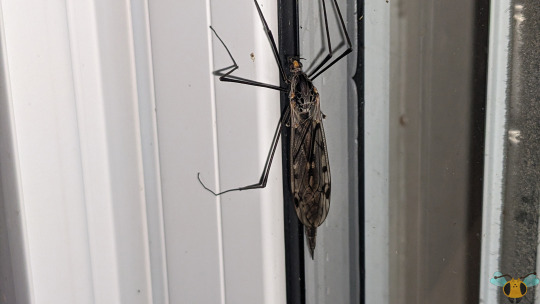







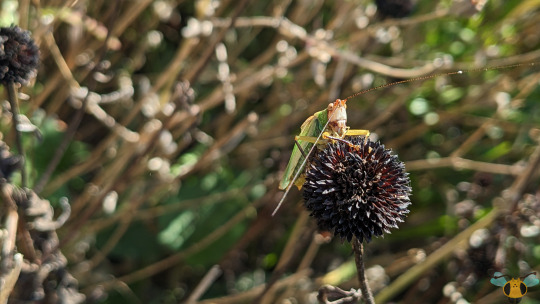
Insect Highlights of 2024
With the new year celebrations scheduled for this weekend, I thought it best to share some of my favorite insect specimens from this year, rather than one single typed of insect. The pictures here haven't been uploaded to the blog in a post, so today they can all share the spotlight. There are many familiar faces here and all of them are incredible and beautiful creatures. Hopefully there are even more insect delights and finds to enjoy in the upcoming year. To ring in the new year, we have the following insects:
Four-Spotted Skimmer - Libellula quadrimaculata - Order Odonata (May 24th)
Giant Crane Fly - Tipula metacomet - Order Diptera (September 16th)
Spring Fishfly - Chauliodes rastricornis - Order Megaloptera (May 27th - from Muskoka)
Milkweed Aphids - Aphis nerii - Order Hemiptera (September 3rd - alongside German Yellowjackets)
Oil Beetle - Meloe campanicollis - Order Coleoptera (October 21st)
Fall Webworm Caterpillars - Hyphantria cunea - Order Lepidoptera (July 25th)
Great Golden Digger Wasp - Sphex ichneumoneus - Order Hymenoptera (July 1st)
European Earwig - Forficula auricularia - Order Dermaptera (September 21st)
Common Red Soldier Beetle - Rhagonycha fulva - Order Coleoptera (July 1st)
Black-Legged Meadow Katydid - Orchelimum nigripes - Order Orthoptera (October 27)
All pictures here were taken in 2024 with a Google Pixel 4.
Wishing everyone a Happy New Year and a marvelous 2025! Thank you everyone for making this another beautiful year of insect observations! I hope to reach even more of you this year with many more wonderful insect pictures and videos. Enjoy your celebrations!
#jonny’s insect catalogue#happy new year#dragonfly#fishfly#earwig#caterpillar#katydid#aphid#beetle#wasp#giant crane fly#oil beetle#four spotted skimmer#european earwig#milkweed aphid#spring fishfly#black legged meadow katydid#fall webworm caterpillar#great golden digger wasp#common red soldier beetle#ontario insect#fly#toronto#2024#happy new year 2025#yearly insect highlights#fall webworm moth caterpillar#tipula metacomet
21 notes
·
View notes
Text


My son, the beasty
#bugblr#bugs#megaloptera#insects#Spring Fishfly#Chauliodes rastricornis#arthropods#mine#Chauliodinae#Corydalidae
181 notes
·
View notes
Note
trick or treat

Pretty fly for a fishfly!


Chauliodes rastricornis - Spring Fishfly
Happy Halloween!
2 notes
·
View notes
Text
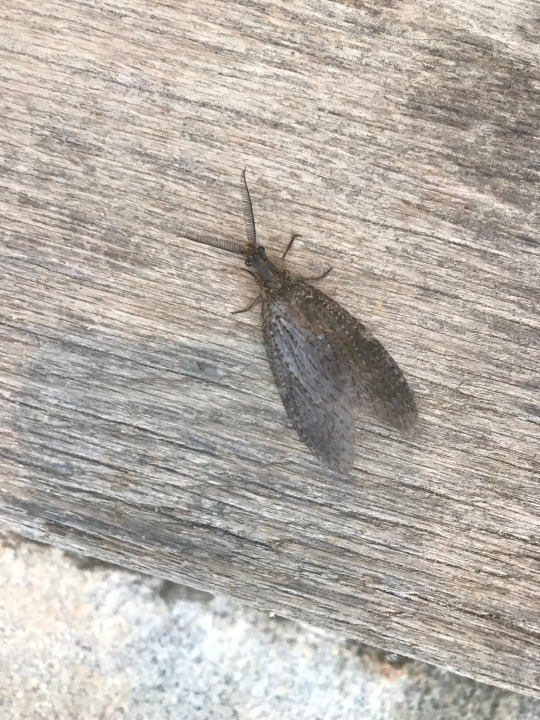
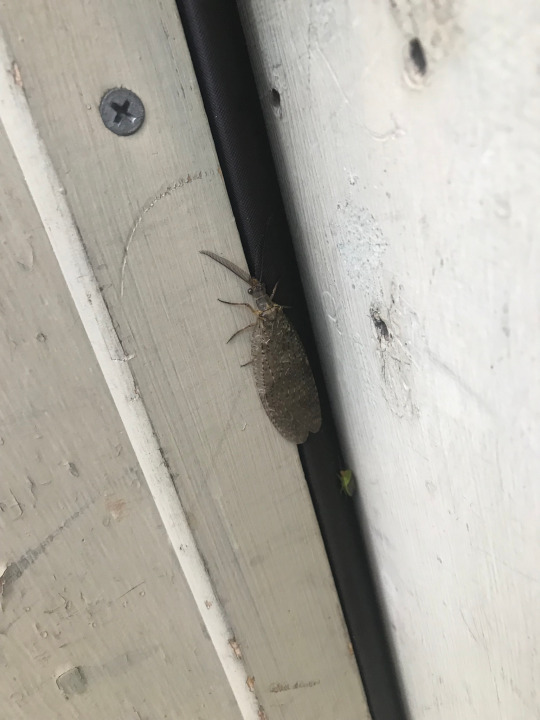
Jun 27, 2023
#I would like to see another fishfly again. Summer or spring does not matter. They are both charming.#That door is to where I needed to go. These ones are big. It was not an ideal scenario for someone still working through a fear of insects.#I mistook it for a moth at first because I did not have a frame of reference for what else it could be.#When I got it down onto the wood it started opening and closing its mandibles at me. I thought that was kind of rude of it in a silly way.#And then the horror-movie-esque realization that moths do not have mandibles dawned on me.#I am ready now. I would like to see another. They have charming eyes.
0 notes
Note
Can you ID please in Mo


Insects ID - MO, USA:
Hello, yes, the L photo is a Spring Fishfly (Chauliodes rastricornis), Corydalidae, order Megaloptera.
The R photo is a Hickory Borer Beetle (Knulliana cincta spinifera), family Cerambycidae.
39 notes
·
View notes
Text
inaturalist user “highwaytohellgrammite” confirming my observation of a spring fishfly larva….. Likely place for them to be
14 notes
·
View notes
Text
Electric Eel: type of freshwater fish from South America
Mountain Goat: in the bovidae family associated with antelopes/gazelles/cattle. the only reason it is not a 'goat' is because it isn't in the same genus as all other goats. it IS more closely related to other "goat-antellopes" such as chamois (Rupicapra), the gorals (Naemorhedus), the takins (Budorcas) and the serows (Capricornis), of Japan and eastern South Asia all of which i did not know existed before I went and started looking into why Mountain Goat Not Goat. you should look at them they're funky
Maned Wolf: not 'true' wolves, or foxes, or strange dog-like deer, they are a canine of South America. just very tall funky canines. its the only species in it's genus.
King Cobra: there are 21 species of cobras, but the king cobra is the sole member of it's genus. it's name comes from it's skill at hunting and eating cobras
Peacock Mantis Shrimp: just a very colorful shrimp-like crustacean with a big punch pow pow
Horny Toad: is lizard! named cause they are horned and also round and flat like toads kinda I guess if you squint at them
Mayfly: also known as shadflies/fishflies/Canadian Soldiers/up-winged flies; hatch and are active from like, spring to autumn, not just in May, and as someone living near a river confluence I am always happy when I actually see them around my house, cause it means the water was healthy enough to let their nymphs develop. one landed on me and chilled for a long while this summer while i was watering my yard, it was sweet- oh sorry, they're related to dragonflies/damselflies
Eastern Kingbird: not a clue why east is in it's name. they breed all over North America and migrate to Central and South America for winter, they mainly like open habitats and are territorial little shits that will be aggressive in their nest defense. like, their scientific name, Tyrannus, means tyrant/despot/king, and it was given to them for a reason, they are aggressive to each other and also you.
as for the Musk Ox, yeah, it's more closely related to sheep and goats than oxen cause it's in the same subfamily/tribe. it has it's own genus, Ovibus, latin for "sheep-ox". males are very stinky during mating season to attract females. it's Woods Cree names "mâthi-môs" and "mâthi-mostos" translate to "ugly moose" and "ugly bison", respectively, which is both amazing and hilarious to me tbh
I have just learned that Mountain Goats are NOT, in fact, actual Goats.
#i went on a small rabbit hole looking all these facts up#things people could look up themselves on wiki but all well here you go lol
203K notes
·
View notes
Text


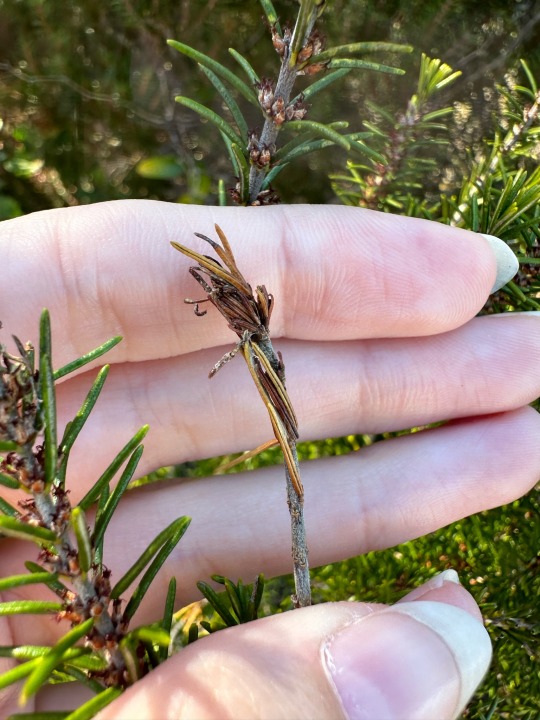

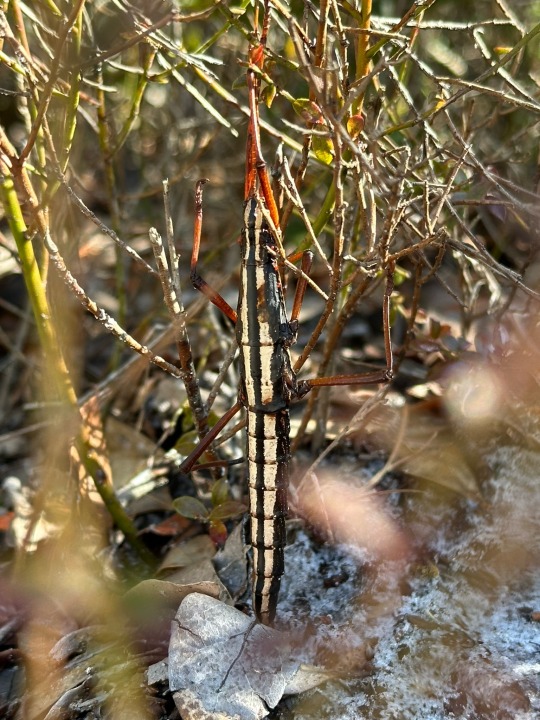

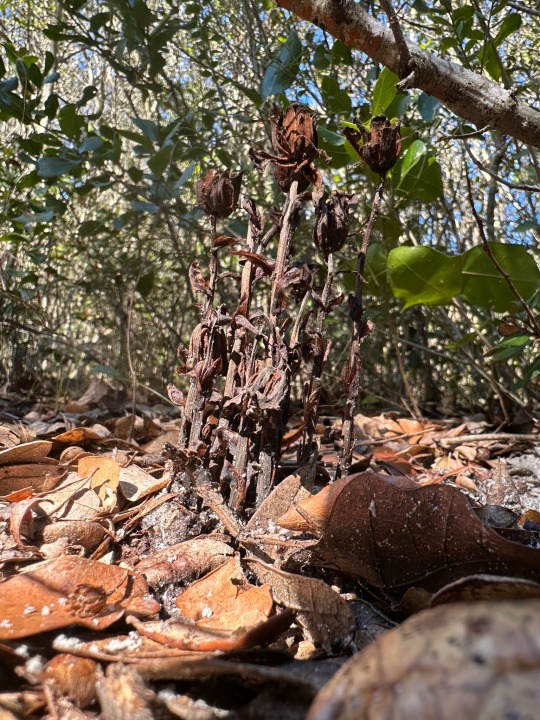


A few cool things I saw on my adventure in Volusia County on Thursday.
🕷
Very excited about the spring fishfly and that spider, which were both new species to me! The spider is either a Mecaphesa asperata (Northern crab spider) or a species that isn’t in any of my spider guides. Check out the pic with my hand to see a different part of the plant that spider was on—the spider seems perfectly adapted to just look like a dead section of the false rosemary!
🕷
Also pictured: earthstar fungus, a cactus Hidden Mickey, ghost pipes past their prime, a southern 2-striped walkingstick (Anisomorpha buprestoides), fluffy Garberia, a carpet of deer lichen that looks soft enough to take a nap in, and sunlight streaming through a leaf with impeccable TEXTURE 😍
🌲
🕷
���
🪲
🔍
#florida #bug #insect #spider #fungus #wetlands #earthstar #mushroom #macro #nature #naturelovers #outsideisfree #cactus #nature_brilliance #fiftyshades_of_nature #scarab #springfishfly @visitwestvolusia @countyofvolusia
1 note
·
View note
Text


Bug of the Day
It's fishfly season! (Finger for scale, she's a big girl!)
#spring fishfly#Chauliodes rastricornis#Chauliodes#Corydalidae#Megaloptera#fishfly#insect#bug of the day#BotD
183 notes
·
View notes
Text







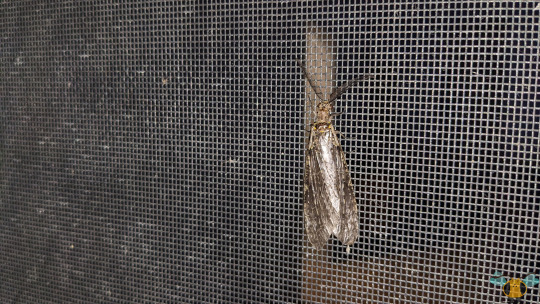


Spring Fishfly - Chauliodes rastricornis
The lakes and forests of cottage country always have so many surprises when it comes to insects. I thought the Hudsonian Whiteface Dragonfly was going to be the highlight, but then I saw this large-winged individual trying to phase his way through a screen door to get inside. When I first saw the wingspan and flight pattern, I expected to see a giant Moth, so imagine my surprise to see an elusive Fishfly! He sure does fly like a Moth, and even rests like one with the wings folded backward and was drawn by the porchlights. He was definitely the highlight of the evening and greatly dwarfed all other nearby insects! While an insect like this appears intimidating, rest assured that he is perfectly harmless and can be handled with care. According to Bugguide and other identification sources, this specimen is more likely to be a Spring Fishfly rather than a Summer Fishfly (C. pectinicornis), but not just because he was found flying in May instead of July. Given habitat ranges and differing timeframes of adult emergence from the water, seasonality cannot be the sole factor for identification. Apparently, the best way to distinguish between the 2 species are to examine the two parallel markings on the back of the insect's head, just behind their ocelli.
As can be seen from Pictures 5 and 7, our Spring Fishfly friend has dark-colored head markings contrasting with its lighter shell. The Summer Fishfly's head markings and body are the reverse of that (bright markings, darker shell). This identification however, doesn't take into account other species of Fishfly that may call lakes home, so examine your Megalopteran carefully. As if net-veined wings and yellow highlights along the head's mouthparts, thorax and wing-bases weren't enough of an allure for the camera, there are the elongated and feathered antennae to admire. There's no doubt that these antennae used to locate the enticing pheromones of females (also similar to the function of feathered Moth antennae). The feathering designated this individual as a male; a female Fishfly would have had serrated antennae with saw-like grooves. At a passing glance, with their slight curvature they resemble grand mandibles! However, that style of antenna (pectinate) my only occur for this genus; other genera may have other types. For example, Neohermes Fishflies have antennae that resemble balls on a string (moniliform). Mileage may vary, but if you're looking to try and find some Fishflies, approach the water in spring (or summer) and see what insects come to the light. Have some bug repellent or patches handy to keep the Mosquitoes away, as adult Caddisflies aren't going to eat them.
Pictures were taken on May 27, 2024 in Muskoka with a Google Pixel 4. The instances of white ocelli seen in the images here are due to the camera's flash.
#jonny’s insect catalogue#ontario insect#fishfly#spring fishfly#megaloptera#insect#muskoka#may2024#2024#entomology#nature#invertebrates#arthropods#photography#animals
36 notes
·
View notes
Text
I think that's a summer fishfly! :D


An unknown bug we found in our room. It was originally in the shower on its back unmoving in a puddle of water, looked like it had drowned.
When a family member went to go grab it to toss it outside it was suddenly alive again?!?
If you know what it is I'd love to know haha
#Took me a bit to figure out but yeah i think it is#Huh#Maybe spring fishfly#But definitely a fishfly
19 notes
·
View notes
Text

I saw this cool girl at the plant nursery today. She is a spring fishfly (Chauliodes rastricornis)

0 notes
Photo

Spring fishfly - seen one of these near your #watergarden? No, they don't eat #fish, but they do feed on #aquatic #plants and #insects. #Fishflies are said to be indicative of healthy marine water in areas with high populations, where they are actually appealing food sources for, you guessed it, fish.
2 notes
·
View notes
Photo
I’d wager this is a male spring fishfly, Chauliodes rastricornis.
This assumes it was found in Eastern North America.
To show my work:
The pectinate (feathered) antennae are a dead giveaway in North American Megaloptera; they point to fishflies in the genus Chauliodes. They’re spread throughout basically the entire right half of the USA.
Summer fishflies of both sexes have pectinate antennae, however in the spring fishflies, this only occurs in the males. So how do you tell them apart?
The markings on the back of their neck.
In a summer fishfly, they will have light markings on a dark background.
In a spring fishfly, they will have dark markings on a light background.
So that’s basically how I narrowed it down.
Time for some cool facts about these lil critters!
True to their namesake, spring fishflies emerge first and summer fishflies emerge in the summer. That been said, both can fly as late as September.
They spend a comparatively small portion of their lives as adults, sometimes not even bothering to feed. They survive as adults for about a week, which is significantly longer than the 24-48 hours that Mayflies have, despite generally having the same reproductive strategy.

Stonefly! Not sure what type it was but oh boy was it cool to see another one!
480 notes
·
View notes
Photo

Bug of the Day
D’awwww, cute little fishfly puppy!!! *pat* *pat* *pat*
#spring fishfly#fishfly#Chauliodes rastricornis#Chauliodes#Corydalidae#Megaloptera#insect#pat pat pat
321 notes
·
View notes